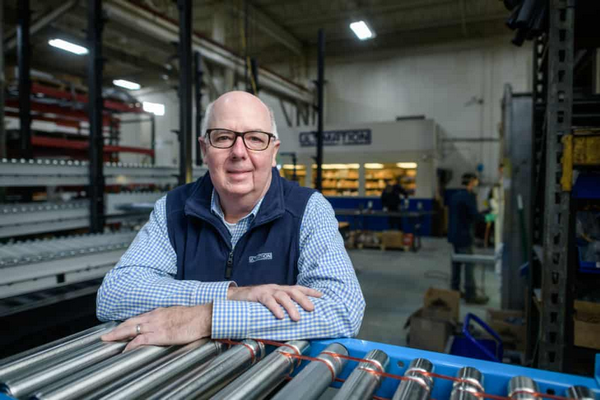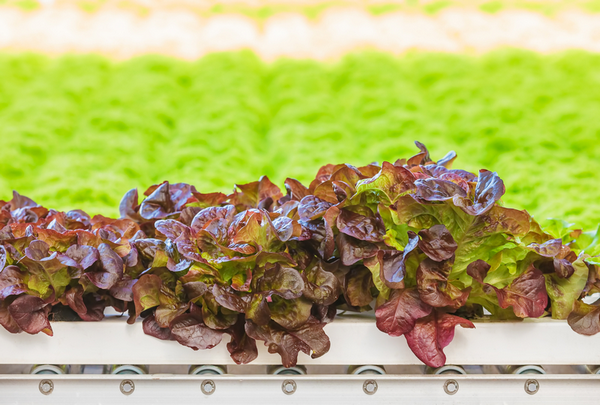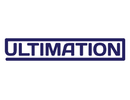Indoor farming is all about maximizing food production per acre, but growers who want to further increase yields should consider growing “up” with the help of conveyor technologies that make use of the available vertical space within a facility, according to Ultimation Industries.
Ultimation is a direct-to-consumer conveyor manufacturer for food processing, vertical farming, warehousing, delivery and other industries.
Increasing productivity
“Conveyors are one of the simplest and quickest productivity improvements a fast-growing business can implement and are especially suited to the vertical farming industry,” said Richard Canny, president of Ultimation.
“Simple roller conveyors or overhead I-beam trolleys can have a payback of days or weeks, while larger custom-built systems often have payback periods of only 3-6 months.” Ultimation is currently building the material handling system for 'what is believed to be the world’s largest indoor vertical farming facility.'

Richard Canny
Perhaps the most obvious way conveyor technologies can help increase indoor farming productivity is by taking advantage of unused vertical space above a work area. Overhead conveyors can lift growing trays when they’re not being actively managed and bring them back to the operator level for tending and harvesting, allowing more produce to be grown within the same footprint.
Conveyors can also help reduce the manual labor of carrying items by hand, quickly and safely transporting plants from point A to point B. According to Richard, systems can be engineered to seamlessly integrate with harvesting and packing equipment available through Ultimation’s expansive partner network.
Ultimation uses materials made of galvanized steel, zinc-plated materials and powder-coated frames which are approved for food-grade applications and are easily cleaned, another productivity savings for indoor farmers. Ultimation can also design systems for hanging towers and growth pods made of food-grade plastic when required.

Various options possible
Different types of conveyor systems are typically used for different parts of the growing process, according to Richard. For example, the sections of the farms where plants are sitting still can use simple, standardized material handling systems. Vertical format conveyors such as hanging towers or horizontal formats such as growing trays can be customized to match the grower’s needs.
Once plants are grown, more sophisticated technologies like automated motorized conveyors and automatic storage and retrieval systems are needed to safely move the produce to the harvesting area. The most commonly used industrial automation equipment for indoor farming are gravity roller, belt, and skate wheel or flow rail conveyors. These systems use the force of gravity to move the load, allowing the product to roll along the upper surface.
Optimizing space
“The best planned and best-run indoor farming facilities take into account the product’s growth cycle and will likely use a combination of conveyor system designs to maximize productivity,” said Richard. “Our engineers understand the economics of indoor farming and can help growers design, build and implement material handling solutions that meet their needs and budget.”
More recently, the technology used in larger vertical farming systems is including motorized and overhead conveyors that take advantage of the generally unused vertical space above the working area. Using curved sections or even lifters, they bring produce down to operator level and back up to higher elevations as needed.
Power and Free conveyors are the ultimate in space and volume optimization for vertical farming systems as they enable tight concentration of product in some areas while also enabling separation of the products for movement to processing areas.
 For more information:
For more information:
Kali Cresent, Sales and Marketing Manager
kcresent@ultimation.net
+1 586-771-1881
Ultimation Industries, LLC
www.ultimation.net
